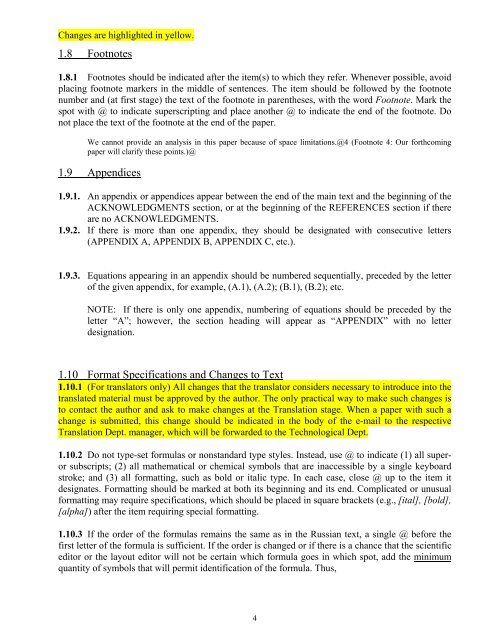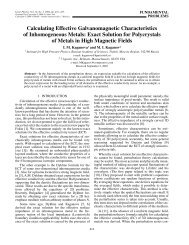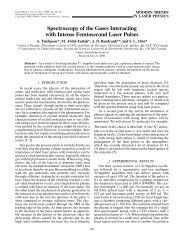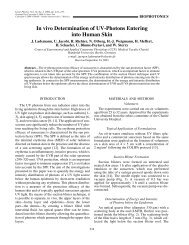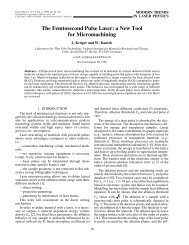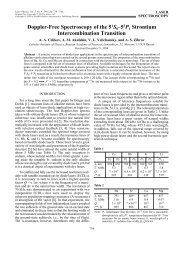House Style Guide 2011 - MAIK "Nauka/Interperiodica"
House Style Guide 2011 - MAIK "Nauka/Interperiodica"
House Style Guide 2011 - MAIK "Nauka/Interperiodica"
- TAGS
- maik
- www.maik.ru
You also want an ePaper? Increase the reach of your titles
YUMPU automatically turns print PDFs into web optimized ePapers that Google loves.
Changes are highlighted in yellow.<br />
1.8 Footnotes<br />
1.8.1 Footnotes should be indicated after the item(s) to which they refer. Whenever possible, avoid<br />
placing footnote markers in the middle of sentences. The item should be followed by the footnote<br />
number and (at first stage) the text of the footnote in parentheses, with the word Footnote. Mark the<br />
spot with @ to indicate superscripting and place another @ to indicate the end of the footnote. Do<br />
not place the text of the footnote at the end of the paper.<br />
We cannot provide an analysis in this paper because of space limitations.@4 (Footnote 4: Our forthcoming<br />
paper will clarify these points.)@<br />
1.9 Appendices<br />
1.9.1. An appendix or appendices appear between the end of the main text and the beginning of the<br />
ACKNOWLEDGMENTS section, or at the beginning of the REFERENCES section if there<br />
are no ACKNOWLEDGMENTS.<br />
1.9.2. If there is more than one appendix, they should be designated with consecutive letters<br />
(APPENDIX A, APPENDIX B, APPENDIX C, etc.).<br />
1.9.3. Equations appearing in an appendix should be numbered sequentially, preceded by the letter<br />
of the given appendix, for example, (A.1), (A.2); (B.1), (B.2); etc.<br />
NOTE: If there is only one appendix, numbering of equations should be preceded by the<br />
letter “A”; however, the section heading will appear as “APPENDIX” with no letter<br />
designation.<br />
1.10 Format Specifications and Changes to Text<br />
1.10.1 (For translators only) All changes that the translator considers necessary to introduce into the<br />
translated material must be approved by the author. The only practical way to make such changes is<br />
to contact the author and ask to make changes at the Translation stage. When a paper with such a<br />
change is submitted, this change should be indicated in the body of the e-mail to the respective<br />
Translation Dept. manager, which will be forwarded to the Technological Dept.<br />
1.10.2 Do not type-set formulas or nonstandard type styles. Instead, use @ to indicate (1) all super-<br />
or subscripts; (2) all mathematical or chemical symbols that are inaccessible by a single keyboard<br />
stroke; and (3) all formatting, such as bold or italic type. In each case, close @ up to the item it<br />
designates. Formatting should be marked at both its beginning and its end. Complicated or unusual<br />
formatting may require specifications, which should be placed in square brackets (e.g., [ital], [bold],<br />
[alpha]) after the item requiring special formatting.<br />
1.10.3 If the order of the formulas remains the same as in the Russian text, a single @ before the<br />
first letter of the formula is sufficient. If the order is changed or if there is a chance that the scientific<br />
editor or the layout editor will not be certain which formula goes in which spot, add the minimum<br />
quantity of symbols that will permit identification of the formula. Thus,<br />
4


